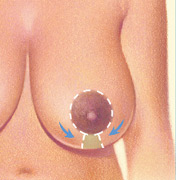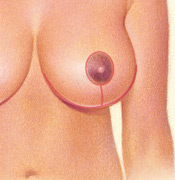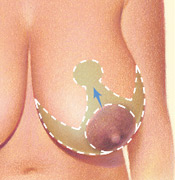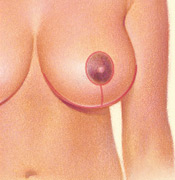Dr. Mark Barlow MD, Plastic Surgeon in Houston, Clear Lake, Texas
450 Medical Center Blvd., Suite 207, Webster, Texas 77598
(281) 333-8999
Breast reduction, technically known as Bilateral Reduction Mammaplasty, is usually performed for physical relief rather than simple cosmetic improvement. Most women who decide to have a breast reduction have large, sagging breasts that restrict activities and cause physical discomfort. This can lead to a variety of medical problems — from back and neck pain and skin irritation to skeletal deformities and breathing problems. For this reason, the surgery may be covered by your insurance plan.
Breast reduction removes skin, fat and glandular tissue from the breasts, making them smaller, lighter and firmer. It can also reduce the size of the areola (the darker skin surrounding the nipple). The goal is to give the woman smaller breasts that weigh less. A side benefit is better-shaped breasts that are in more proportion with the rest of her body.
Techniques for breast reduction vary, but the most common procedure involves an anchor-shaped incision that circles the areola, extends downward, and follows the natural curve of the crease beneath the breast. The surgery usually takes three to four hours, and is performed as an outpatient surgery.
Breast reduction surgery is frequently a provided benefit with most insurance plans. We will help you navigate through the insurance process provided your procedure is medically necessary to relieve pain and discomfort.
Breast Reduction Procedural Steps
Breast reduction surgery is usually performed through incisions on your breasts with surgical removal of the excess fat, glandular tissue and skin.
In some cases, excess fat may be removed through liposuction in conjunction with the excision techniques described below.
The technique used to reduce the size of your breasts will be determined by your individual condition, breast composition, amount of reduction desired, your personal preferences and Dr. Barlow's advice.
Step 1 - Anesthesia
Medications are administered for your comfort during breast reduction surgery. General anesthesia as well as local anesthesia are utilized.
Step 2 - The incision
The incision lines that remain are visible and permanent scars, although usually well concealed beneath a swimsuit or bra.
Incision options include:
-
A keyhole or racquet-shaped pattern with an incision
around the areola and vertically down to the breast
crease.


-
An inverted T or anchor-shaped incision pattern.


Step 3 - Removing tissue and repositioning
After the incision is made, the nipple-which remains tethered to its original blood and nerve supply-is then repositioned. The areola is reduced by excising skin at the perimeter, if necessary.
Underlying breast tissue is reduced, lifted and shaped. Occasionally, for extremely large pendulous breasts, the nipple and areola may need to be removed and transplanted to a higher position on the breast (free nipple graft).
Step 4 - Closing the incisions
The incisions are brought together to reshape the now smaller breast. Sutures are layered deep within the breast tissue to create and support the newly shaped breasts; sutures, skin adhesives and/or surgical tape close the skin. Incision lines are permanent, but in most cases will fade and significantly improve over time.
Step 5 - See the results
The results of your breast reduction surgery are immediately visible. Over time, post-surgical swelling will resolve and incision lines will fade. Satisfaction with your new image should continue to grow as you recover.